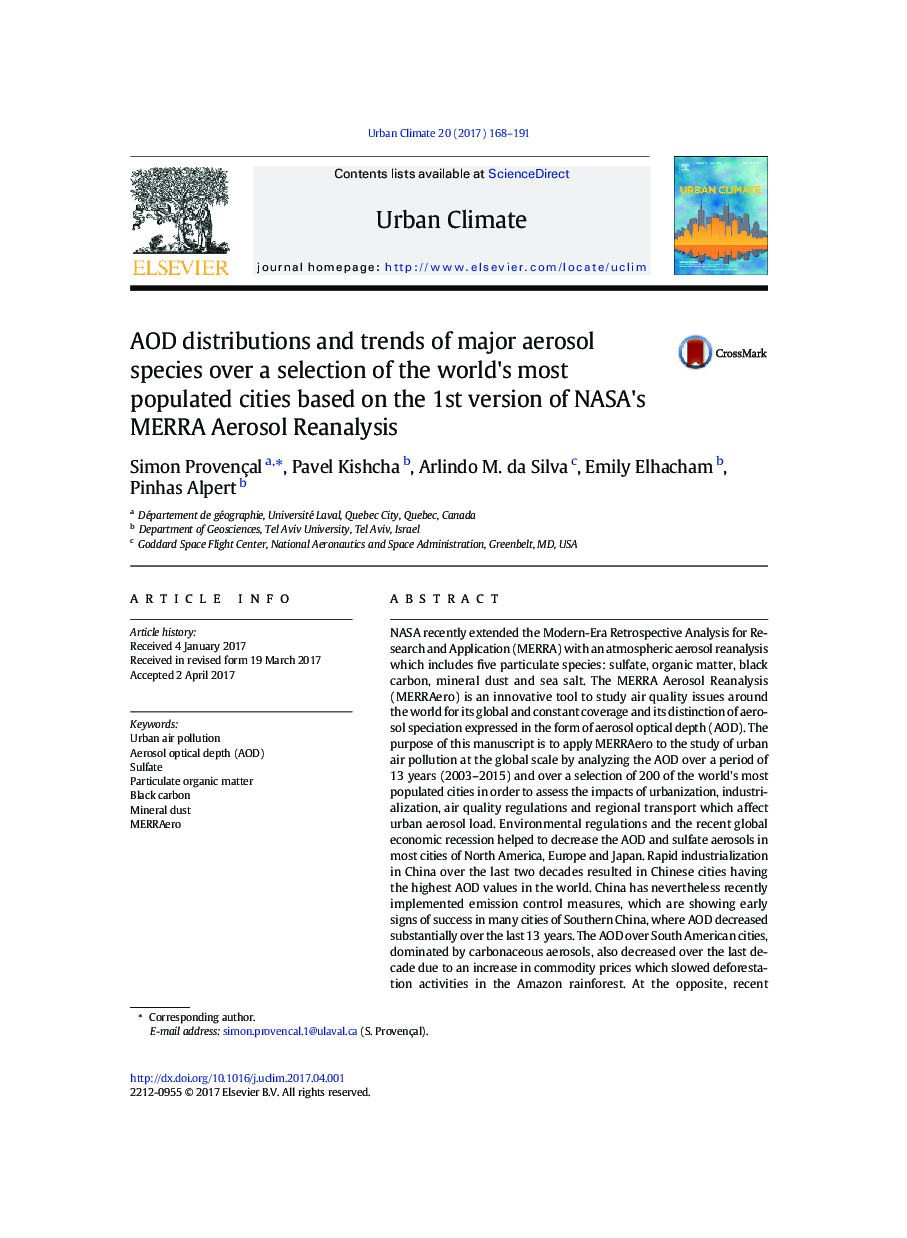| Article ID | Journal | Published Year | Pages | File Type |
|---|---|---|---|---|
| 6464499 | Urban Climate | 2017 | 24 Pages |
â¢AOD chemical speciation trends are presented over major cities (2003-2015);â¢AOD decreased in US and European cities due to regulation and the recent recession;â¢AOD decreased in South American cities due to a decline in Amazonian deforestation;â¢AOD increased in Indian cities due to urbanization and industrialization;â¢AOD recently decreased in East Asian cities due to regulation in China.
NASA recently extended the Modern-Era Retrospective Analysis for Research and Application (MERRA) with an atmospheric aerosol reanalysis which includes five particulate species: sulfate, organic matter, black carbon, mineral dust and sea salt. The MERRA Aerosol Reanalysis (MERRAero) is an innovative tool to study air quality issues around the world for its global and constant coverage and its distinction of aerosol speciation expressed in the form of aerosol optical depth (AOD). The purpose of this manuscript is to apply MERRAero to the study of urban air pollution at the global scale by analyzing the AOD over a period of 13Â years (2003-2015) and over a selection of 200 of the world's most populated cities in order to assess the impacts of urbanization, industrialization, air quality regulations and regional transport which affect urban aerosol load. Environmental regulations and the recent global economic recession helped to decrease the AOD and sulfate aerosols in most cities of North America, Europe and Japan. Rapid industrialization in China over the last two decades resulted in Chinese cities having the highest AOD values in the world. China has nevertheless recently implemented emission control measures, which are showing early signs of success in many cities of Southern China, where AOD decreased substantially over the last 13Â years. The AOD over South American cities, dominated by carbonaceous aerosols, also decreased over the last decade due to an increase in commodity prices which slowed deforestation activities in the Amazon rainforest. At the opposite, recent urbanization and industrialization in India and Bangladesh resulted in a strong increase of AOD, sulfate and carbonaceous aerosols in most cities of these two countries. The AOD over most cities in Northern Africa and Western Asia changed little over the last decade. Emissions of natural aerosols, which cities in these two regions tend to be mostly impacted by, don't tend to fluctuate significantly on an annual basis.
